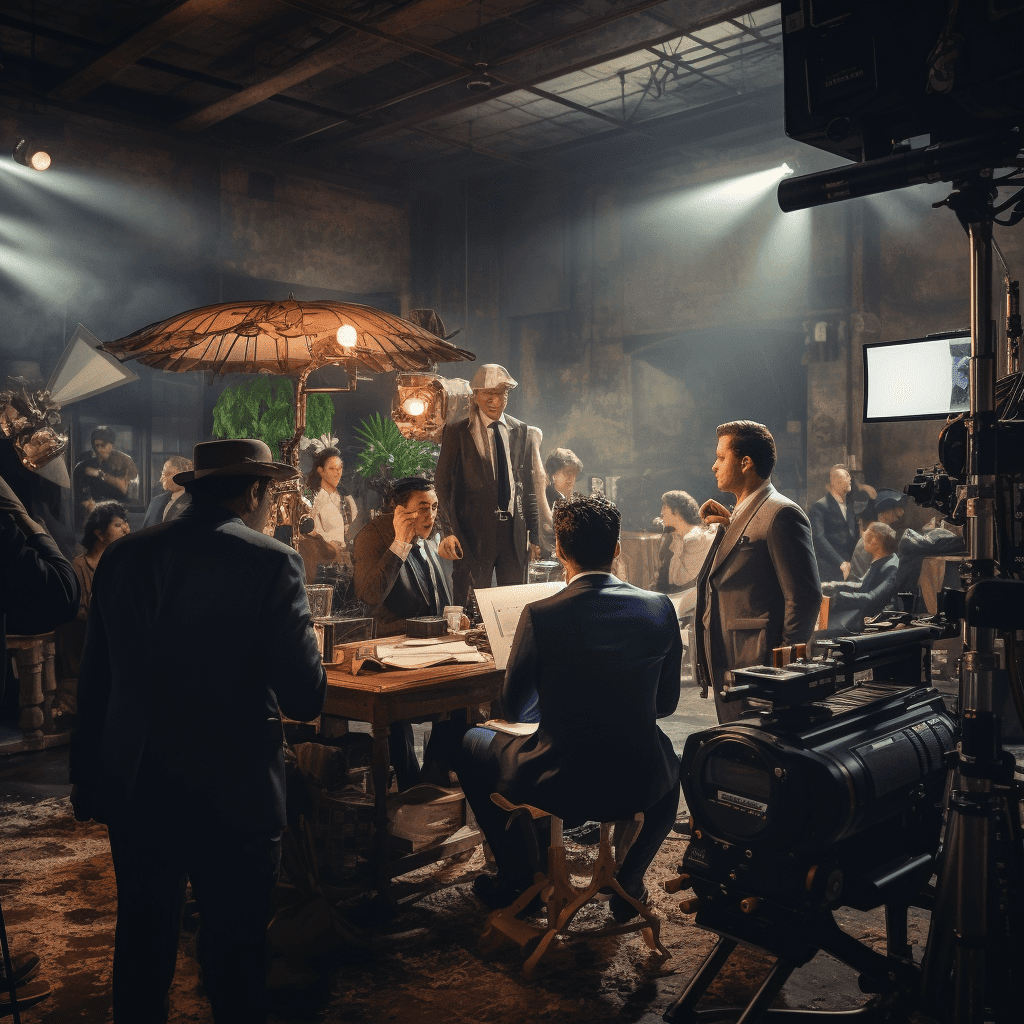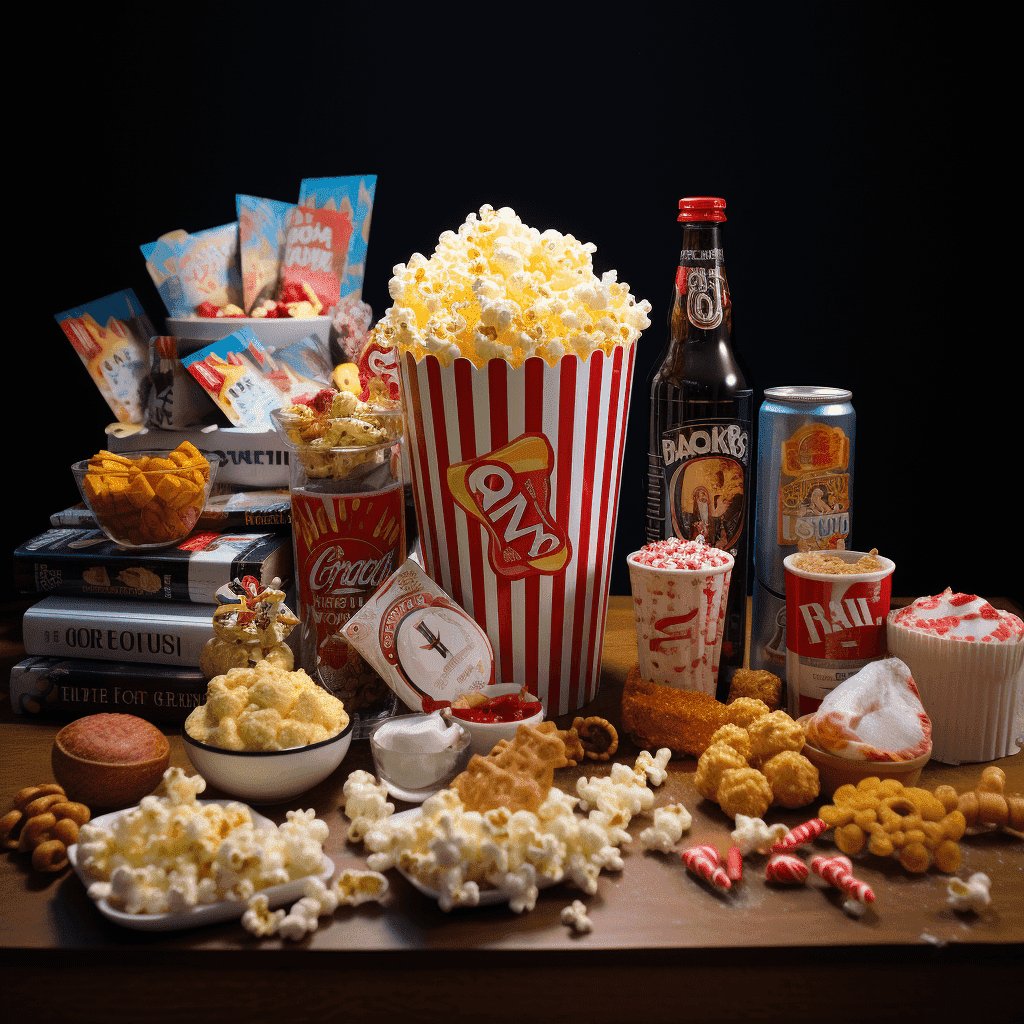What's After the Blog?
History • Technology
The Art of Stop Motion Animation in Film
Discover the captivating world of stop motion animation in film, exploring its history, techniques, and future on What's After the Movie (ATM) blog.
March 26, 2024

Movies mentioned in this article
The Art of Stop Motion Animation in Film
Introduction to Stop Motion Animation
Stop motion animation stands as a unique pillar in the world of filmmaking, characterized by its ability to breathe life into inanimate objects frame by frame. This technique, where objects are physically manipulated in small increments between individually photographed frames, creates the illusion of movement when the series of frames is played as a continuous sequence. Its origins trace back to the late 19th century, with early films like The Humpty Dumpty Circus pioneering the technique. Over the years, stop motion has evolved from a novelty act to a sophisticated storytelling medium, used in feature films, television series, and short films.
The charm of stop motion lies in its tangible, handcrafted quality, which brings a sense of whimsy and realism simultaneously. Unlike traditional 2D animation, which is drawn, or 3D animation, which is digitally constructed, stop motion requires the animator to physically interact with the materials. This hands-on approach adds a unique texture and depth to the visuals, as seen in classics like King Kong (1933), where the titular character was brought to life through a combination of stop motion and live-action.
Modern stop motion films have expanded the possibilities of the medium, combining traditional techniques with digital technologies. Films like Coraline and The Fantastic Mr. Fox showcase intricate details and sophisticated storytelling, demonstrating the potential of stop motion to create immersive and complex cinematic worlds. The distinct visual style of stop motion, with its slightly jerky yet charming movement, creates a magical realism that captivates audiences of all ages.
The Process of Creating Stop Motion Films
Creating a stop motion film is a meticulous and time-consuming process, often requiring immense patience and precision. The journey begins with a concept or story, which is then translated into a detailed script. Storyboarding follows, where the narrative is visually broken down into individual scenes and shots. This stage is crucial for planning the flow of the film and understanding the technical requirements of each scene.
Once the storyboard is finalized, the process of creating the characters and sets begins. Depending on the style of the film, these could range from clay figures in claymation, like in Wallace & Gromit: The Curse of the Were-Rabbit, to elaborate puppet models used in films like The Nightmare Before Christmas. These models and sets are crafted with incredible attention to detail, as they need to withstand the rigors of frame-by-frame manipulation.
The actual animation process involves moving the characters or objects by tiny increments and capturing a frame each time. This is where the magic of stop motion comes alive, as animators bring inanimate objects to life with subtle movements. The process is labor-intensive; animators often spend entire days to produce just a few seconds of footage.
Post-production is where the film is pieced together, with the addition of sound effects, music, and any digital effects. This stage is essential in enhancing the atmosphere and emotion of the film, as seen in the hauntingly beautiful soundtrack of Corpse Bride.
In conclusion, the process of creating a stop motion film is a labor of love, requiring a blend of artistic vision and technical skill. The end result, however, is a captivating piece of cinema that stands out for its unique aesthetic and storytelling power.
Pioneers and Innovators of Stop Motion
The world of stop motion animation has been graced by numerous pioneers and innovators who have pushed the boundaries of this art form. Among the most notable is Ray Harryhausen, whose work in the mid-20th century set a high bar for stop motion animation in films. Harryhausen’s creatures in Jason and the Argonauts and The 7th Voyage of Sinbad are legendary, showcasing his mastery in bringing mythical creatures to life with a sense of realism and personality. His technique, known as Dynamation, allowed live-action and animated elements to be combined seamlessly, creating a groundbreaking visual experience.
In the contemporary era, directors like Tim Burton and Henry Selick have carried the torch of stop motion animation, blending gothic aesthetic and whimsical storytelling. Tim Burton’s The Nightmare Before Christmas, directed by Selick, and Corpse Bride are quintessential examples of this style, combining macabre themes with endearing characters. Burton’s distinctive visual style and narrative approach have made his films iconic in the stop motion genre.
Another notable figure is Nick Park, the creator of the beloved Wallace & Gromit series. Park’s work is known for its charming British humor and detailed clay animation, which has captivated audiences around the world. His films have not only been commercially successful but have also garnered critical acclaim, including several Academy Awards.
These innovators have not only crafted beautiful films but have also inspired a new generation of animators. They have shown that stop motion, despite its labor-intensive nature, is a medium rich in potential, capable of telling stories in ways that no other form of animation can.
Stop Motion Techniques and Materials
Stop motion animation employs a variety of techniques and materials, each bringing a different aesthetic and feel to the final film. One of the most popular techniques is claymation, where characters and sets are made from malleable clay. Claymation allows for a great deal of flexibility in terms of character design and movement, as seen in Chicken Run and the Wallace & Gromit series. The tactile nature of clay also adds a warm, organic quality to the films.
Puppetry is another common technique in stop motion. Puppets used in films like Coraline and The Boxtrolls are often made with a combination of materials like fabric, wire, and rubber, allowing for detailed designs and expressive movements. The use of puppets can bring a certain level of realism and depth to the characters, making them more relatable to the audience.
Cut-out animation, where flat materials like paper or cloth are cut into shapes and animated, is another technique. This style is exemplified in films like The Adventures of Prince Achmed, one of the earliest surviving animated feature films. Cut-out animation offers a distinct visual style that is both whimsical and visually striking.
The choice of materials and techniques has a significant impact on the visual
Iconic Stop Motion Films and Their Impact
Over the years, numerous stop motion films have left an indelible mark on the landscape of cinema, enchanting audiences with their unique storytelling and visual artistry. These films have not only showcased the technical prowess of stop motion animation but also its potential to convey deep, emotionally resonant stories.
One of the most iconic films in this genre is The Nightmare Before Christmas, directed by Henry Selick and produced by Tim Burton. This film is celebrated for its stunning visuals, imaginative characters, and engaging storyline. It has become a cult classic, influencing not only the world of animation but also popular culture at large. Another landmark film is Coraline, also directed by Selick, which mesmerized audiences with its dark, eerie atmosphere and complex narrative.
The Wallace & Gromit series, created by Nick Park, is another excellent example of stop motion’s impact. These films, known for their humor and inventive plots, have become beloved fixtures in animation, earning critical acclaim and a dedicated fan base. Chicken Run, also from Aardman Animations, further demonstrated the versatility of stop motion in telling diverse and captivating stories.
These films and others like them have not only entertained audiences but also expanded the possibilities of storytelling in animation. They have shown that stop motion can be used to create not just children’s tales but intricate narratives that resonate with all ages, making a significant contribution to the art of filmmaking.
The Challenges and Rewards of Stop Motion Animation
Stop motion animation is a meticulous and challenging art form, requiring immense patience and attention to detail. Each second of film can necessitate multiple movements and adjustments, with animators often spending entire days to capture just a few frames of footage. The process can be labor-intensive and time-consuming, with a single film taking years to complete.
One of the biggest challenges in stop motion animation is maintaining consistency and fluidity in the characters’ movements. Unlike digital animation, where characters are manipulated with software, stop motion requires physical manipulation of the models for each frame. This demands not only technical skill but also artistic vision to ensure that the movements feel natural and convey the desired emotions.
Despite these challenges, stop motion animation offers unique rewards. The tactile nature of the materials and the physical involvement in the animation process create a distinct connection between the animator and the artwork. This hands-on approach imbues the film with a sense of craftsmanship and authenticity that is difficult to replicate with other forms of animation.
Furthermore, the enduring popularity of stop motion films speaks to their unique charm and appeal. In an age dominated by CGI and digital effects, stop motion stands out for its artistry and the tangible, organic quality it brings to storytelling. Films like Fantastic Mr. Fox and Isle of Dogs, directed by Wes Anderson, are celebrated for their distinctive style and the meticulous detail evident in every frame, showcasing the enduring appeal and relevance of stop motion animation in contemporary cinema.
The Future of Stop Motion in Cinema
The future of stop motion animation in cinema holds exciting possibilities, as technological advancements are continuously integrated into this traditional art form. While maintaining its distinctive tactile and handcrafted quality, stop motion is evolving through the incorporation of digital technologies. This fusion of old and new techniques allows for greater creative freedom and efficiency in the animation process.
Emerging technologies like 3D printing are revolutionizing the way models and puppets are created. For instance, the use of 3D printing in Kubo and the Two Strings allowed for a more detailed and efficient production of the film’s intricate characters. Additionally, advancements in digital photography and software are enhancing the quality and scope of stop motion films, enabling animators to achieve effects and visual styles that were once impossible.
Despite these technological advancements, the essence of stop motion—its physicality and frame-by-frame animation—remains unchanged. This blend of tradition and innovation ensures that stop motion will continue to be a unique and beloved form of storytelling. As new tools and techniques become available, we can expect to see even more imaginative and ambitious stop motion films in the future.
Conclusion
Stop motion animation stands as a testament to the power of creativity and the enduring appeal of physical art forms in the digital age. Through its meticulous process and distinctive aesthetic, stop motion brings stories to life in a way that resonates with audiences of all ages. The artistry and dedication required for this form of animation are immense, but the result is a deeply immersive and visually stunning cinematic experience.
As we have seen, stop motion has evolved from its early beginnings to become a versatile and expressive medium in cinema. The innovations and achievements in this field continue to inspire and captivate filmmakers and audiences alike. As technology progresses, it will be exciting to see how stop motion animation adapts and thrives, continuing to tell enchanting stories that blend the magic of the tangible with the wonders of imagination.
Continue reading

What's After the Movie?
Not sure whether to stay after the credits? Find out!
Check out our other apps:
Actors
Companies
Latest Movies
© 2025 What's After the Movie. All rights reserved.

















